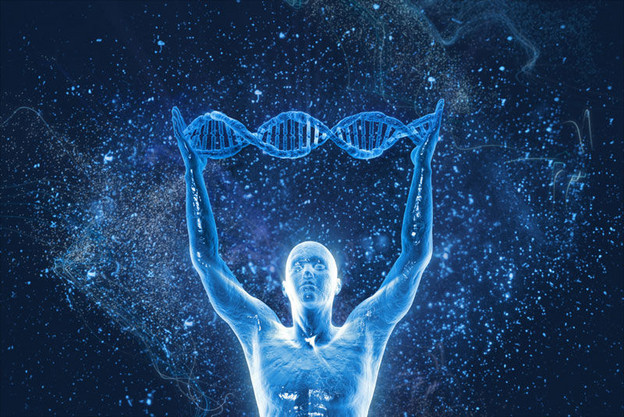Roy Ascott's moistmedia and the second big BANG (bits atoms neurons genes)

Bio-artist, cybernetician, and assembleur Roy Ascott refers to “a moistmedia substrate where digital systems, telematics, and genetic engineering” all meet. This fertile matrix, in his imagining, is a haven for “cultural traditions previously banished from materialist discourse as esoteric and shamanic.” This esoteric tendency poetically and noetically questions the very bases of uppercase Form and Objecthood. In his Parmenides dialogue, Plato claims that soil is a byproduct of the deterioration of other more substantial objects, and so only has a tentative hold on “formhood” itself. Similarly, a gene is a precursor as well as a product of organisms, and so stands in odd relation to the notion of Form, since it is a substance but also a speller of a substance.
Ascott’s artworks and writings explore a pivotal site where “silicon and pixels merge with molecules and matter,” an interstice that is a “moist domain” between virtuality’s “dry world” and biology’s “wet world.” In his coinage, bits, atoms, neurons, and genes add up to the acronym BANG. This particular bang is not a cosmogonic eruption outward of compressed ur-matter, but an intersection of components at the level of their similarities.
Ascott works and imagines on that frontier where the primary units of data, matter, life, and heredity are being blended. He writes of the “convergence of the three VRs”: a Virtual Reality of “cyberception,” a “prosaic, Newtonian” Validated Reality, and a Vegetal Reality where all forms of living matter intertwine as a single vine. Language itself is a key interface here: “the body loves surfaces, solidity, resistance,” and yet the language contoured and emitted by that body’s moist membranes revels in obliqueness and apparent illogic and its ability to hurdle over pragmatic limitation.
Born in Bath (also the birthplace of the most libidinal of Chaucer’s Canterbury pilgrims), Ascott currently operates out of Shanghai, a ferment of global innovation whose name in Chinese alludes to its looking out on a vast ocean of possibilities. His “natrificial” sense of poetics is frequently based not on lineation but on data-flow diagrams in which every node is stationary noun and dynamic verb at once. Just as the alphabetic system allows for infinite arrangements of coherent meaning via the use of a small set of components, Ascott foresees an infinitely plastic future in which the most fundamental and formative units of matter interact to modify and punctuate one another across once-strict domain membranes.
Now that genes can be written and neurons modified and so much divergent matter can be reduced to bits, the Babelian scattering of modular components is being regathered as researchers find new ways of transliterating between the once-foreign tongues of digital bits and organic molecules. The atom is a place of Adamic tinkering and Ascott, who lambasts “outlived metaphors,” is himself a prodigious crafter of metaphors awaiting emergence into reality. He imagines a modular interchange in which the components of every sort of matter are reduced to an omega point where their ontological overlaps in substance can be exploited into interaction, and genes can be scripted as easily as atoms can be choreographed and genes can be redrawn.
In his writings and diagrams and in genre-busting works like Aspects of Gaia, Syncretic Cybernetics, and The Analogues, Ascott is a builder of figurative axon fibers between “fundamental blocks of nature” that can increasingly be intermarried via positional assembly and digital mapping. Ascott also foresees a dovetailing of “dry silicon pixels and biologically wet particles” in which an artwork and its observer form a “sperse” or interspersing, in which once-passive audition is active participation and “authorship” is more and more distributed across subjectivities.
Instead of a “residue,” moistmedia is a “presidue,” a harbinger of hybrids to come. In the anthropological cliché, humans derive from a “primordial ooze,” but moistmedia is a posthuman ooze. This notion of marrying the limpid, malleable matter of life with the virtual and therefore similarly malleable matter of language has major implications for genetics and poetics alike. If poetry is that quantum place where rampant association allows for a more unbroken view of reality, bio-science is a further implementation of such continuum, where new forms of “sentience” can be written out as a matter of molecular “sentences” and imagery can be implanted as well as evoked.
Ascott optimistically claims that we are at a “bye-bye, Baudrillard” moment, turning simulacra to our favor, enlivened (instead of oppressed) by our own artifice. Moistmedia is a mixed-reality spanner bridge between “the natural and artificial domains.” “Rhyme” in such a poetics is based on resonance and resemblance, scripted by an “ontological engineering,” a computational rip current on which organic and engineered particles are bubbles in a common foam.
A p.s. to Genesis: notes on transgenic/bio-poetic art